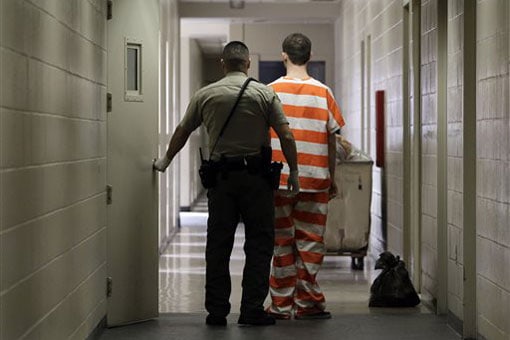Reforming California’s criminal justice system with the early release of prisoners is a step in the right direction, according to Stanford law experts who see a larger problem in America’s approach to incarceration.
“In the long term, this reallocation of resources should significantly improve public safety,” said Michael Romano, the director and co-founder of the Stanford Justice Advocacy Project, which last week released a report on the early release program. Romano also discussed the issue in a Stanford Law School blog.
Prisons and jails in California have been overcrowded for decades. In 2014, however, state voters approved Prop. 47, which converted six nonviolent offenses related to drug and property offenses from felonies to misdemeanors, which makes early release possible.
The law has reduced the ranks of the incarcerated by 13,000 and is estimated to save the state about $150 million this year, according to the Stanford report. Prior to the enactment of Prop. 47 in November 2014, the combined prison and jail population was just under 195,000, Romano said.
‘Remarkably low’ recidivism
Romano said that while it’s difficult to make across-the-board generalizations, the data so far indicates that prisoners released early under recent reforms to California’s sentencing laws are not engaging in the type of criminal behavior that some people feared.
“Put another way, the recidivism rate of prisoners released early under these reforms is remarkably low – and below the recidivism rate of ordinary prisoners released from custody,” said Romano, adding that “recidivism” is a notoriously difficult figure to capture.
“But the best data available shows that these prisoners are doing much better than anyone could have reasonably anticipated,” said Romano, a lecturer in law.
The benefit of early release, according to Romano, is that it ensures that certain prisoners are no longer serving unfair and unnecessary sentences. There is also a fiscal benefit, he added. Under Prop. 47, the money saved will be spent on school truancy and dropout prevention, victim services, mental health and drug abuse treatment – programs to keep offenders out of prison.
“I don’t think people intended to impose life sentences for shoplifters or drug users, but that’s the way California law has operated for decades. In addition to the human costs, the sentencing reforms will save hundreds of millions of dollars,” he said.
Romano believes the drawbacks are few.
“Crime victims may feel cheated – if, for example, they believed that an offender would be imprisoned for a long period of time and then that sentence is changed by the voters. But this is a small group of people. The sentencing reforms target drug users and shoplifters – so there are few victims. And polling shows that even crime victims support these reforms,” he said.
Problem of punishment?
Mugambi Jouet, lecturer in law and the Thomas C. Grey Fellow at Stanford Law School, said America’s policymakers need to reconsider society’s approach to mass incarceration, given both the human and financial costs involved. The country’s incarceration rate is roughly 7 to 10 times higher than for other Western democracies, he said.
“Overall, a person convicted of a crime in America will typically receive a much harsher sentence than someone convicted of a similar crime in other Western nations,” he said.
Jouet said he thinks few people realize how criminal punishments in the United States compare to those of other countries. “Not only does America have nearly the highest incarceration rate worldwide, it is the only Western democracy that has refused to abolish the death penalty,” he said.
Jouet said the murder rate is much higher in the United States than in most other Western countries. For crimes like robbery, sexual assault, and simple assault, the data suggest that America is generally within the range of other Western nations, he added.
“America’s murder rate is by far the highest in the West, but its rate for other crimes generally falls within the range of Western countries,” he said.
In terms of early release, Jouet said prisoners’ disciplinary records inside prison are important. If they are rehabilitating themselves and showing progress, then it is wise to consider early release.
“Persons who have stayed out of trouble in prison while making strides toward rehabilitation are good candidates for early release or a sentence reduction more generally,” he said.
Jouet noted that criminality and violence diminish with age. This speaks to the problem of the high juvenile incarceration rate in the United States, which is, according to Jouet, essentially the only Western country tosentence teenagers to life sentences.
“Our juvenile incarceration rate dwarves those of other Western democracies,” he said. “Our approach to juvenile justice not only raises profound humanitarian problems, it is also counterproductive in further destabilizing children and ultimately exacerbating adult criminal behavior.”
Demographics and politics play roles as well, Jouet said. “Aside from race and class discrimination, the exceptional harshness of criminal punishment in America is shaped by a range of other factors, from a more populist form of government to the lesser weight given to human rights as a legal and moral principle,” Jouet said, noting hisresearch on this topic.
Yet, rhetoric about criminal justice reform has mostly not been matched by concrete actions, as the reforms adopted so far have been relatively minor, he added.
“If attitudes toward crime evolve, we will be in a position to focus more on rehabilitation, crime prevention and other root social causes of crime, such as wealth inequality or failing public schools,” Jouet said.


